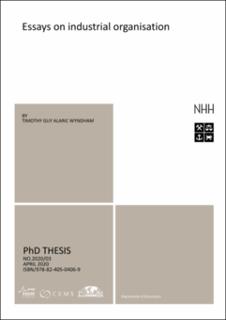| dc.description.abstract | This dissertation examines the implications of changes in technology and government
regulations for the prices consumers pay and the volumes they consume in two
important markets: the market for news and the market for alcohol.
Digital technology has transformed the newspaper market, a market where preferential
tax treatment of printed newspapers has been widespread although this has not always
been extended to digital newspapers. Given the fundamental similarity of content
between digital and printed newspapers this digital divide is under pressure. But, what
are the implications of lowering the tax rate on digital news? Will it lead to lower
prices and more consumption? In a model which allows consumers to buy more than
one source of news, and for newspapers to have different cost structures the first paper,
published in the International Journal of Industrial Organisation, finds that reducing
VAT rates on digital newspapers leads to higher prices for readers.
The second paper, published in European State Aid Quarterly, describes and applies the
findings of the first paper and associated literature to a decision made by the European
Free Trade Area Surveillance Authority (ESA). The decision permitted a temporary
reduction of VAT on digital newspapers in Norway. We confirm that even a tax
reduction which equalises tax conditions between printed and digital newspapers
qualifies as State Aid. However, the Norwegian authorities argued that the State aid
should be allowed as the tax reduction would reduce prices and increase consumption.
This finding goes against the findings of Chapter 1, and as such we argue that the ESA
did not have grounds to accept the aid as being compatible with the single market.
The third paper uses the recent expansion of Vinmonopolet to examine the relationship
between alcohol consumption and sick leave. Our core finding is that an increase in
alcohol consumption of 1 percent leads to an increase of sick leave in men of around
0.3 per 10,000 men, an increase of around 0.16 percent, at the mean.
The fourth paper returns to the market for newspapers and investigates the impact of
digital newspapers imposing paywalls on news consumption. This is a central question
for digital newspapers, as they need to carefully weigh the increased revenue from
charging readers for news against lost advertising revenues if they receive less views.
When newspapers introduce a paywall we find that short run consumption of news falls
by 3-4 percent, and continues to fall by between 9-11 percent in the long run. | en_US |
